In India, livestock sector plays an important role in improving the socio-economic conditions of farmers. 70% of livestock population is owned by landless and marginal farmers and thus, provides livelihood support to nearly two-third of rural households. So, livestock acts as cushion to the farmers in the times of draught as the agricultural farming alone can be risky to farmers specifically in our country due to unpredictability of several factors like weather, crop failure and market availability. Therefore, with the empirical approach of veterinary science, the livestock sector will help in bridging the gap that still exists to meet the goal of “Doubling Farmer’s income by 2022” which was given by Honorable Prime Minister Shri Narendra Modi five years back on February, 2016 in Bareilly, UP.
The domestic animals in terms of generating the diverse economical and monetary benefits to farmers, consequently becomes a dependable “bank on hooves” for them in their trying times or need of the hour. The livestock population was increasing gradually over the years in our country as it was observed as 4.6% increase in total livestock number in the current livestock census (DAHDF, 2019). Therefore, to utilize our nation’s increasing livestock reserve for the maximum benefits and growth of our farmers, the focus should shift to increase the number of productive animals and thus, the productivity. It can be achieved by regulating the livestock population specifically large animals like cattle and buffalo by adopting several new breeding policies along with modifying the existing breeding policies which is the need of the hour.
As per the latest census i.e., 20th livestock census, the total cattle population in India is 193.46 million, out of which 142.11 million are indigenous or non-descript cattle and only 51.36 million are exotic or crossbred cattle (DAHDF, 2019). The production statistics depict that the average milk yield of indigenous cattle is 3.9 kg per day whereas that of crossbred and exotic cattle is almost double i.e., 7.1 kg per day which is still considerably lesser than the best of global standards being 25.6 kg per day for UK and 32.8 kg per day for USA. As a result, in our country, the indigenous cattle are contributing only 10 per cent whereas exotic and crossbred contributes 27 per cent to total annual milk production which is almost 2.5 times that of indigenous (DAHDF, 2019). The main cause of low productivity includes intrinsic factors like low genetic potential of the indigenous breeds and extrinsic causes like poor nutrition of animal due to availability of low quality feed or fodder, inferior farm management practices, inefficient execution of existing breeding programmes and inadequate extension services to farmers. Therefore, with the aim to improve productivity, there is a strong need to modify the existing breeding policies and adopt new breeding initiatives recommended by government into the field. Such breeding initiatives include promoting artificial insemination (A.I) by using superior quality semen for improving the genetic potential of our indigenous cattle. However, the A.I coverage in cattle and buffalo in our country is hardly 35 per cent, which is an area of chief concern and the reason for this is lack of adequate number of trained staff and lesser supply of good quality semen straws. To achieve adequate A.I coverage, the required number of semen straws is 160 million whereas the availability is 81 million, nearly half of the target (Niti Policy Paper, 2017). Although, this target can be achieved by increasing the number of semen production centers which are 54 only in the whole country along with additional frozen semen storage banks from their existing number i.e., 235 (DADHF, 2019). More skill oriented A.I trainings should be given to field paravets or livestock attendants so that A.I is facilitated at famer’s doorsteps to achieve the annual target of 160 million.
Other breeding policies that need to be encouraged are selective breeding, cross breeding, practical implementation of “Embryo Transfer Technology” (ETT) in field to produce genetically superior productive animals. The era of breeding initiatives can be taken a step ahead by the use of “Advanced reproductive technology” that involves the use of “Sex Sorted” semen. The predetermination of sex by the use of sexed semen hastens the genetic progress and allows the farmer to selectively increase the number of female or male calves as per the requirement of their farms. It reduces the cost of management of animals for farmers and produces more number of high genetic merit females that will further increase productivity and thus generate more profit to farmers. The process of A.I of farm animals by using sex sorted semen is approved by FAO as a promising way for improving efficiency of farm animals and thus the famers. In India, it is being standardized for indigenous breeds like Sahiwal, Gir, Haryana and Red Sindhi (DAHDF, 2019). All these aspects are associated with focusing on increasing productivity specifically milk production and this draws the attention for doubling farmer’s income towards “Dairy sector development” along with several other avenues available to farmers discussed below.
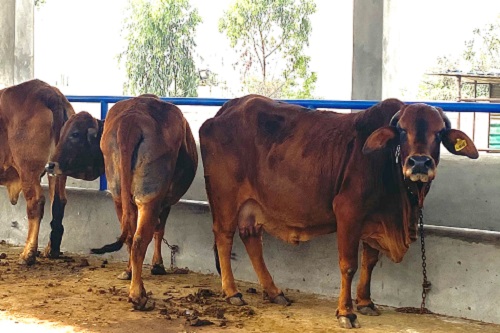
Dairy Sector development
India is already leading in milk production in the world by producing 187.75 million tonnes annually. However, nation’s several central schemes like National Dairy Plan Phase 1 being run by National Dairy Development Board (NDDB) aims to take it further higher to 254 million tonnes annually by 2022 to meet its rapidly growing demand. This action plan will subsequently aid in doubling the farmer’s existing potential and thus income. Another step to enhance farmer’s growth in this sector is implementation of Dairy entrepreneurship programme that will help livestock owners to learn how they can become entrepreneurs and have their own startups to reap huge benefits. Several such programs are being run and sponsored by NABARD (NABARD, 2019). The central government has also approved a specific fund of for “Dairy processing and infrastructure development” that involves fund of Rs 10,881 crores for its utilization in creation, modernization or expansion of dairy processing infrastructure and building an efficient milk procurement system that will generate employment opportunities and will therefore benefit upto 95 lakh farmers in 50,000 villages (DAHDF, 2017; www.transformingindia.mygov.in). Therefore, this sector holds a bright future for farmers to utilize maximum benefits from these schemes and have their own dairy startups and draw multifold benefits.
Poultry Sector development
The poultry sector becomes another area of interest that can be adopted by farmers due to its diverse benefits to them. As poultry alone is contributing 50 per cent of total meat production in the country and it still has a huge demand among consumers. Besides meat, the egg production is also a very beneficial part of poultry sector for farmers. The total egg production is 103 billion per year in our country but its per capita availability is 79 eggs per year which is way lesser (almost half) than that recommendation of 182 eggs per year by ICMR (DAHDF, 2019). Therefore, still a huge gap exists in this sector which can be utilized by farmers for their benefits with lesser inputs and more output. The government is also encouraging farmers to adopt the poultry rearing by providing trainings to interested farmers along with a stipend of Rs 2000/- to each (www.dahdf.com). Along with that the DADHF is providing the feeds and other technical facilities like timely vaccination of flock against deadly diseases etc to poultry rearing farmers to make their enterprise more profitable and reap great margins to them.
Value addition
The output of both dairy and poultry sectors can be taken a step ahead by farmers to actually multiply the farmer’s income many fold by making them aware of the process of value addition to milk, meat and eggs. The economic value of livestock products is increased by changing its current place, time and form characteristics more preferred in the market place. With rapid industrialization, disposable increase in income, nuclear family, education and awareness, the market for value added livestock products is increasing at faster pace. These market forces have led to greater opportunities and ensure profitability and viability of industry in addition to catering increased consumer demands with respect to health, nutrition and convenience. Adequate financial and technical assistance from government and non government agencies is equally important for the promotion of livestock products processing sector. Various innovative value added livestock products from eggs (egg jam, egg paneer, egg pickle, instant egg mixes), meat (sausages, salamis, loaves, pickles, patties) and milk (mozzarella cheese, variety of lassis) were developed at GADVASU, Ludhiana. Many of these technologies has been successfully utilized by various entrepreneurs throughout India.

Livestock-Fish integrated farming
Integration of livestock with fish farming is another profitable option which has already been adopted by various farmers and acting as one of the method for doubling their profits e.g. chicken or duck along with fish farming or goat rearing with fish farming. It is considered as economical method of recycling organic waste or fecal waste from poultry or other livestock to be utilized as feed for fish. This type of farming will reduce the cost of buying separate supplementary feed for fishes and thus with the rearing cost of one, twin benefits can be utilized by the farmers.
Byproduct utilization
For enhancing the profits of farmers another underutilized aspect of livestock is its by product. The cow dung or animal waste can be converted to vermicompost by the action of earthworm and microorganisms. This vermicompost can be further used as a very good fertilizer or farm manure which will further reduce the cost of production of the farmers and make the farming more economical and subsequently increase in profits. This type of byproduct utilization will promote organic farming leading to better returns and marketing options including international markets to the farmers. On an average, 400 kg bovine dung can be converted to 800-1000 kg vermicompost annually and we can imagine the quantum of benefits the farmer can withdraw from it.
Production of biogas is another aspect of utilizing the organic waste generated from livestock in which the gas is produced from anaerobic digestion of that organic waste or biomass in a clean, renewable source of energy. This can be used further as a fuel or substitute for other non renewable fuels and in turn will conserve the depleting sources of energy as well.
Even the dead livestock never loses its value, if properly utilized as it will generate twin benefits of proper carcass disposal as well as generating some income too. Skin or hide from the dead animals can be sold for further processing and bones obtained from carcass can be used by converting them to bone powder. This bone powder can be used as animal feed or fertilizer as a source of Calcium and Phosphorus. It all therefore gets recycled into useful byproducts thereby contributing to environment as well as generating money to farmers.
Government policies and initiatives
All the aspects associated with livestock sector can be utilized by farmers in doubling their income but for its successful execution farmers need financial or policy support from government as well. Practically, the science and technology along with institutions and policy support from government together can only make this dream of doubling farmer’s income by 2022 achievable which was announced time back in 2016 by the then Finance minister Arun Jaitley.
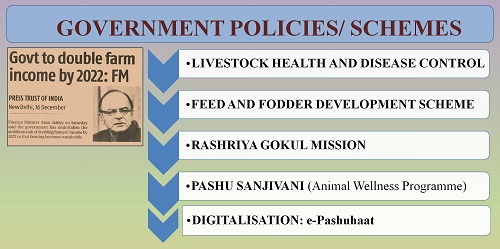
So, the government is sponsoring and currently running several central schemes under Dept of Animal husbandry, Dairying and Fisheries e.g.
- Animal Husbandry Infrastructure development fund: In this central fund of worth Rs 15,000 crore, the government has given opportunities to farmer to develop their own enterprises in animal husbandry sector under Atma Nirbhar Bharat Abhiyan. The fund has been divided for encouraging enterprise in three sectors of animal husbandry i.e., a) Dairy Processing and value addition infrastructure b) Meat Processing and value addition infrastructure c) Animal feed plant. The farmer can further utilize the facilities, subsidies and trainings available to them under these funds at several platforms for owning and setting up their own startups.
- Livestock health and disease control: Under this programme efforts are being made in controlling the spread of deadly diseases and treating the animals from economic diseases prevalent in livestock to prevent losses to farmers.
- National Animal Disease Control Programme for FMD and Brucellosis: The Government has launched a new scheme with a financial outlay of Rs. 13,343 crore for five years (2019-20 to 2023-24) by vaccinating 100% cattle, buffalo, sheep, goat and pig population for FMD and 100% bovine female calves of 4-8 months of age for brucellosis to prevent losses of Rs. 50,000 crore to the government and also to increase the economic output of farmers. The mission mode approach for eradication of these diseases is the biggest step any country of the world has ever taken either for human or animal vaccination programme to control any disease. This programme combined with providing unique PashuAadhar to 535 million animals (Cattle, buffalo, sheep, goat, and pig).
- Rashtriya Gokul Mission: The objective of this scheme is to improve the productivity and production of indigenous cattle breeds. The genetic improvement and designed nutritional approaches are introduced to the native breeds for increasing their production.
- Pashu Sanjivani: It is also another programme run by government for ensuring animal wellness.
- Nationwide Artificial Insemination Programme (NAIP): NAIP for 20,000 bovine per district for 600 districts in the country was recently launched by the government in September, 2019 which is one of the largest such programmes with 100% central assistance for undertaking breed improvement. In future, this will be expanded across all the breedable bovine population of 600 districts so that India achieves 70% AI coverage. Under NAIP, more than 11 lakhs AI has been done as on 31.12.2019.
- Kisan credit cards: It was launched by the central government under DAHDF with the aim to benefit all dairy farmers and therefore, provide “Kisan credit cards” to 1.5 crore dairy farmers by December, 2020.
- Digitalization: Another key step by government is digitalization of various schemes and thus facilitating the farmers for their ease which is the need of the era. The government has launched an e-portal called e-Pashuhaat which is a virtual market or e-market that facilitates the traceability of high quality bovine germplasm by connecting the farmers directly to breeders and related agencies.
Role of a veterinarian
All the attributes of livestock sector cannot be utilized by farmers to their utmost benefit in doubling their income without the eminent role of veterinarians. So, a veterinarian plays leading role in creating a liaison between government’s plan and policies and their actual implementation at field level. The foremost role is to provide active guidance to farmers about all the diverse options related to livestock and to draw the maximum benefits out of these. Veterinarians working in fields are providing awareness about different government schemes and subsidies for the farmers. A lot of farmer’s trainings are being given provided or conducted for different entrepreneurship programs related to dairy, poultry, piggery and goat units under government schemes through state animal husbandry department and veterinary universities. These schemes provide push to the farmers to start their own startups for better financial gains.
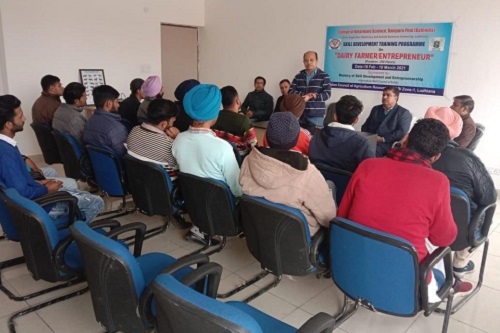
Several extension services are extended to farmers through organization of Kisan Melas/ Divas, free vaccination, deworming camps and through print and electronic media. Therefore, a veterinarian role is vital in achieving the dream of doubling farmer’s income with a focus on livestock sector.
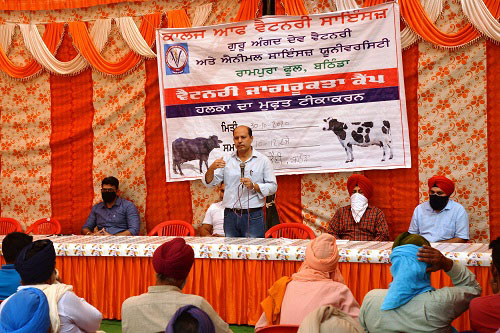
Conclusion
In the nut shell, the dream of doubling farmer’s income can be achieved by adopting scientific livestock farming systems, value addition technologies and establishment of marketing channels, encouraging entrepreneurship and utilization of the byproducts.
References
- Basic Animal Husbandry & Fisheries Statistics (2019). Animal Husbandry Statistics Division, DADF, Ministry of Fisheries, Animal Husbandry & Dairying, GoI.
- Chand R. (2017). Doubling of farmer’s income, Rational, Strategy, Prospect and action plan. Niti Policy Paper: 5-19.
- (2019). Dairy Entrepreneurship Development Scheme (Retrieved from www.nabard.org/content.aspx.id.591, dated 13.09.2019).



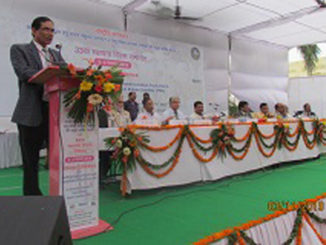

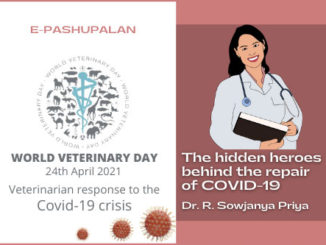

Be the first to comment